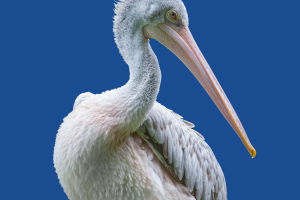Butterflies are called "flying flowers". They are very beautiful insects.
Butterflies are completely metamorphosed insects. They go through four stages of development throughout their lives: egg, larva, pupa, and adult. The first three stages are often referred to as juveniles. Butterflies are diurnal insects, which are active during the day. Different species fly at different speeds and gestures. The adult butterfly siphons nectar, juice, tree juice, sugar or fermentation, or water from a stream or moss. Not all butterflies eat the same things.
Most of the butterfly larvae perch on the leaf or branch of the host plant, making velvet on the surface, and rely on the foot hook tightly grasp themselves to prevent falling.
Moths and butterflies are closely related. Moths outnumber butterflies by about nine to one. Similarly, moths go through four developmental stages in their life: egg, larva, pupa, and adult. They are active at night. Moths have a good sense of smell and hearing, can adapt to nightlife, and have phototaxis.
Moth larvae are considered agricultural pests in many parts of the world. Some moths are raised as economic animals, such as silkworms. People use silk to make fine textiles.
There are a few ways to tell the difference between a butterfly and a moth:
1. Shape.
Butterflies usually have slender bodies, large, beautifully shiny wings, and are slower to fly. Moths usually have short bodies and narrow wings, so they can fly quickly. Most moths are not brightly colored.
2. Tentacles.
The tip of the butterfly's tentacles is thick, like a baseball bat. The roots of the antennae of moths are thicker and thinner as they move forward, like the braid of a cart or the shape of feathers on a chicken.
3. Time of appearance.
Butterflies appear during the day. Most moths are active at night.
4. Wings at rest.
The butterfly has two wings standing up on its back or flapping at rest. One pair in, one pair out, and sometimes up and down. Moths rest with their wings folded on their backs, with their rear wings under their front wings, or resting semi-diagonally at their sides.
5. Larvae
The larval stage of butterflies is generally brightly colored and smooth on the body surface. Moth larvae are generally simple in color and have more hair on the body surface.
6. Pupae.
The chrysalis of the butterfly species is naked and hung by silk or upside down from a tree branch. Moth pupae have cocoons. When the larvae want to pupate, they burrow into the earth, or spin silk between the branches to form cocoons.
Butterflies and moths also have a few things in common:
1. Adult butterflies and moths have scales and siphon mouthparts on their body surfaces and wings.
2. Butterfly and moth larvae, most of which eat the leaves of crops, are agricultural pests.
3. Both butterflies and moths are completely metamorphosed insects, which undergo four developmental stages in their life: egg, larva, pupa, and adult.
4. Both butterflies and moths have six pairs of legs.


